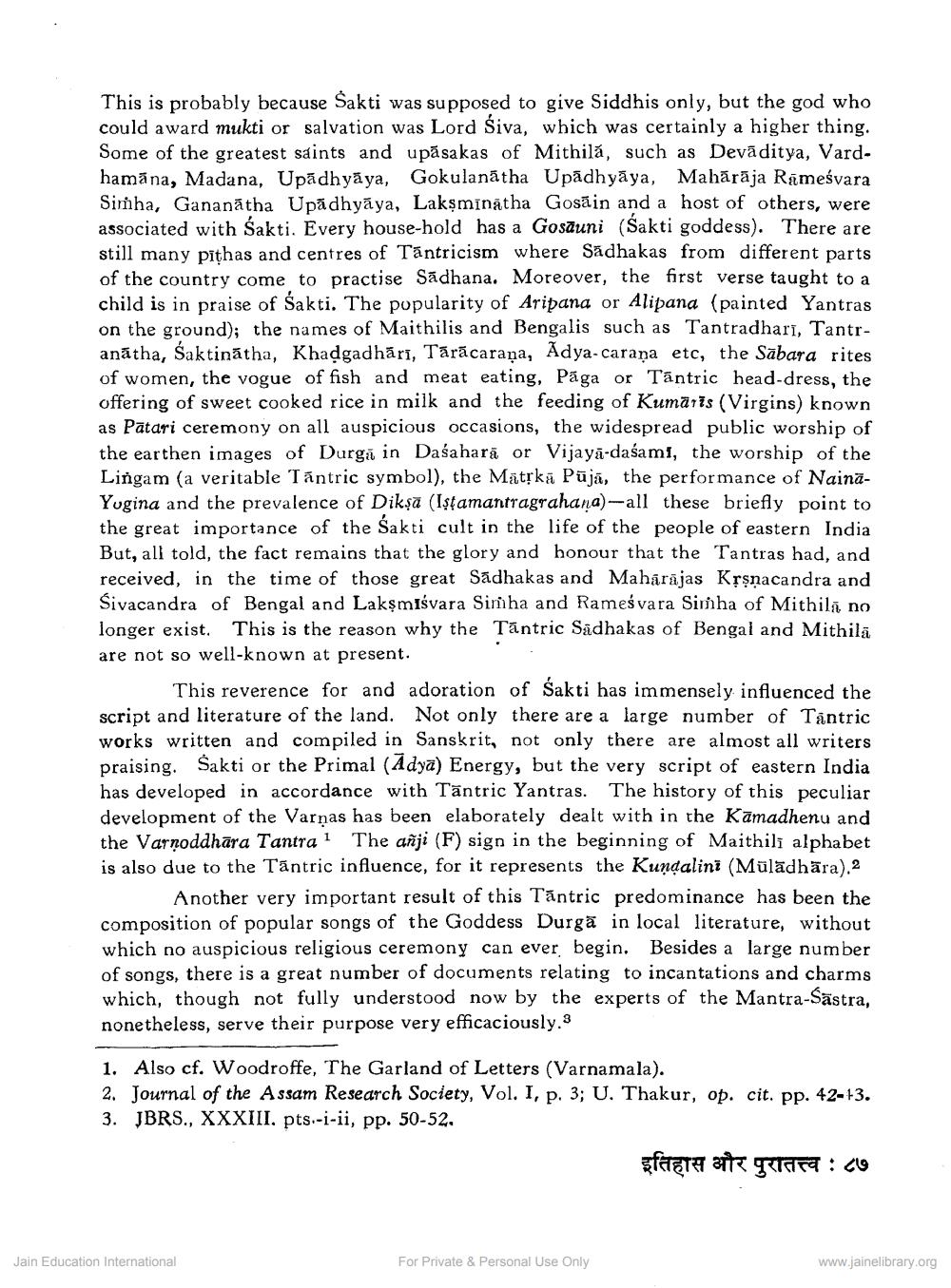Book Title: Tantric Culture Eastern India Author(s): Upendra Thakur Publisher: Z_Agarchand_Nahta_Abhinandan_Granth_Part_2_012043.pdf View full book textPage 5
________________ This is probably because Sakti was supposed to give Siddhis only, but the god who could award mukti or salvation was Lord Siva, which was certainly a higher thing. Some of the greatest saints and upasakas of Mithila, such as Devaditya, Vardhamana, Madana, Upadhyaya, Gokulanatha Upadhyaya, Mahārāja Rūmesvara Simha, Gananatha Upadhyāya, Lakṣminatha Gosain and a host of others, were associated with Sakti. Every house-hold has a Gosauni (Sakti goddess). There are still many pithas and centres of Tantricism where Sadhakas from different parts. of the country come to practise Sadhana. Moreover, the first verse taught to a child is in praise of Sakti. The popularity of Aripana or Alipana (painted Yantras on the ground); the names of Maithilis and Bengalis such as Tantradhari, Tantranatha, Šaktinatha, Khadgadhär, Taracarana, Adya-carana etc, the Sabara rites. of women, the vogue of fish and meat eating, Päga or Tantric head-dress, the offering of sweet cooked rice in milk and the feeding of Kumaris (Virgins) known as Patari ceremony on all auspicious occasions, the widespread public worship of the earthen images of Durga in Daśahara or Vijaya-dasami, the worship of the Lingam (a veritable Tantric symbol), the Matrka Puja, the performance of NainaYugina and the prevalence of Dikṣā (Istamantragrahana)-all these briefly point to the great importance of the Sakti cult in the life of the people of eastern India. But, all told, the fact remains that the glory and honour that the Tantras had, and received, in the time of those great Sadhakas and Maharajas Kṛṣṇacandra and Sivacandra of Bengal and Lakṣmisvara Simha and Ramesvara Sinha of Mithila no longer exist. This is the reason why the Tantric Sadhakas of Bengal and Mithila are not so well-known at present. This reverence for and adoration of Sakti has immensely influenced the script and literature of the land. Not only there are a large number of Tantric works written and compiled in Sanskrit, not only there are almost all writers praising. Sakti or the Primal (Adya) Energy, but the very script of eastern India has developed in accordance with Tantric Yantras. The history of this peculiar development of the Varnas has been elaborately dealt with in the Kamadhenu and the Varnoddhara Tantra1 The añji (F) sign in the beginning of Maithili alphabet is also due to the Tantric influence, for it represents the Kundalini (Mülädhära), Another very important result of this Tantric predominance has been the composition of popular songs of the Goddess Durga in local literature, without which no auspicious religious ceremony can ever, begin. Besides a large number of songs, there is a great number of documents relating to incantations and charms which, though not fully understood now by the experts of the Mantra-Sastra, nonetheless, serve their purpose very efficaciously. 1. Also cf. Woodroffe, The Garland of Letters (Varnamala). 2. Journal of the Assam Research Society, Vol. I, p. 3; U. Thakur, op. cit. pp. 42-13. 3. JBRS., XXXIII. pts.-i-ii, pp. 50-52. इतिहास और पुरातत्त्व : ८७ Jain Education International For Private & Personal Use Only www.jainelibrary.orgPage Navigation
1 ... 3 4 5 6 7
